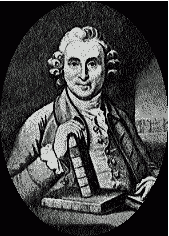History
Ascorbic acid, or Vitamin C, was discovered after scientists had
searched centuries for a cure for the disease known as scurvy. The
name Ascorbic acid comes from word "anti-scurvy" acid, because
it was known to dramatically cure this disease. This disease was caused
by a serious deficiency of Vitamin C, and it caused its victim's small
blood vessels to rupture, bones to weaken, and joints to swell, among
other symptoms. These symptoms were due to the fact that without a
source of Vitamin C one developed severe problems concerning the body's
connective tissues, which is found in bones, skin, muscles, teeth,
blood vessels, and cartilage. This disease would eventually lead to
death if it went untreated, and was not uncommon, especially during
the winter months of the year. The disease often plagues armies, explorers,
and crusaders, since these men's diets normally consisted of biscuits
and salted meat that could easily be stored and kept unspoiled on
a ship.

(from http://www.monzy.com/scurvy/)
A Scottish naval surgeon named James Lind discovered Vitamin C after
a four year sea voyage which was lead by Admiral George Anson. During
the voyage more than a thousand sailors lost their lives to scurvy,
after which Lind began investigating the disease and came to the
realization that the disease was most common among people who's
diet had been extremely limited. To test his hypothesis (that the
disease was caused by a limited diet), he decided to treat sickened
sailors with different foods during a ten-week sea voyage. He found
that a diet with citrus fruit provided the most dramatic cure for
the disease.
Lind published his findings as Treatise on the Scurvy
in 1753, and as a result, in 1795 daily doses of lime juice were
prescribed to all the sailors in the British navy and Scurvy quickly
vanished. However, the British were the only people who accepted
the idea that Scurvy was the result of a dietary deficiency, and
Great Britain was the only place where there was a decline in the
cases of Scurvy. In America, during the Civil war, many men on both
sides of the war died from this disease due to the lack of a source
of Vitamin C in their diet.
In 1907 Axel Holst and Theodore Frolich, two Norwegian biochemists,
proved it to the rest of the world in an experiment where they proved
that Scurvy's symptoms could be produced in a guinea pig when denied
certain foods, and that these symptoms would vanish when the food
was restored. However, even on into the early 20th century explorers
were still dying of Scurvy. One example was Robert Scott's expedition
to the South Pole, when he and his crew were affected by the lack
of Vitamin C containing foods in their diets, not the harsh conditions
and temperatures.
Zilva, another scientist, and his associates attempted to isolate
the substance in different foods that seemed to cure Scurvy between
the years 1910-1920; however, Ascorbic acid (or Vitamin C), which
was the substance responsible for the diminishing of Scurvy, wasn't
isolated until 1928 by two independent teams of researchers. The
two teams were headed by researchers Albert Szent-GyrØ gyi
and Charles G. King. Szent-GyrØ gyi's team of researchers
extracted the substance, which he called Hexuronic acid, from many
different foods such as cabbage, oranges, and paprika. King had
isolated the same substance, which he called Vitamin C, from foods
such as lemons and oranges.
Walter Norman Haworth, the English chemist who is also responsible
for determining the chemical structure of the compound, and Tadeus
Reichstein, who was a Polish-Swiss endocrinologist, synthesized
Vitamin C for the first time in 1933. Becoming the first vitamin
to be artificially made, Vitamin C was marketed for medical purposes
and ended the mass amounts of cases of Scurvy.
Another chemist, Linus Pauling is known for his theories that Vitamin
C helps fight off colds and disease. His works claiming that Vitamin
C prevented the common cold were published in 1970, and he later
published a book dealing with his findings of the relationship between
Vitamin C and cancer.
Home
|

